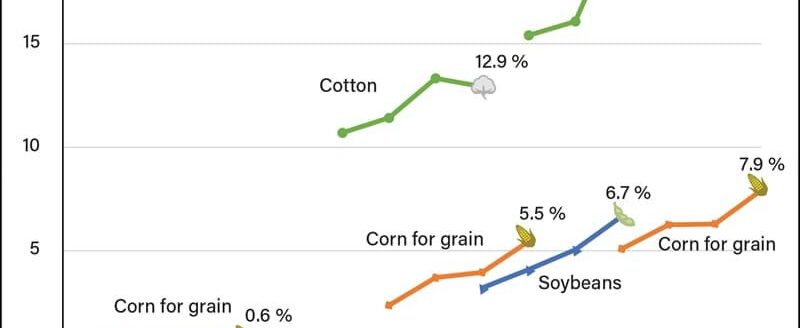Soil test a building block for boosting production
A soil test is still the best tool for taking the guesswork out of cotton production.
Ashley Hammac, a soil scientist with Ward Laboratories, spoke about the importance of soil fertility to maximize cotton production during a session of High Plains Journal’s virtual Cotton U on Dec. 3.
The best way to achieve high productivity is through soil testing, he said.
“You can compare soil sampling to trying to shoot a target with a blindfold on,” he said. “If you don’t know what you have in your soil then you don’t really know where you are going, what you need, where you need it and where you don’t need it.
“The more knowledge we have, the better we can direct fertilizer applications, diagnose problem areas in the field. I have never met a farmer who wasn’t interested in being a good steward of the land.”
Test pH
On the top of the list is testing pH. Soil life, herbicide activity and yields are affected by inadequate pH. The desired range for cotton is between 6.0 to 6.5.
Farmers will see yield reductions and stunted root growth when levels are below 6, Hammac said. Also, toxic elements such as aluminum become more available when the pH is lower. Farmers can use elemental sulfur, hydrogen-producing fertilizers and sulfur-coated urea to help lower pH—but these sources aren’t as practical because of the cost.
Nitrogen
With nitrogen, balance is key, Hammac said. Under-fertilization can result in reduced fruit abortion and reduce yield. Over-fertilizer can cause excessive vegetative growth, increased pests, boll rot, delayed maturity issues and boll abortion.
Potassium
“It’s an essential plant nutrient,” he said. “It helps with tolerance against insects and diseases and then water and heat stress.”
Ways to reduce expense and potassium applications includes implementing cover crops. Also, cotton burrs are high in potassium and therefore “burr extractors” on stripper harvesters help maintain K soil fertility.
Phosphorus
An essential plant nutrient, phosphorus improves early root development and yield. If the soil test for phosphorus is low, Hammac recommends banding. When levels are sufficient, broadcasting is effective. Phosphorus doesn’t move much in soil when applied so you can capture it in subsequent years. Like potassium, cover crops reduce the amount of phosphorus needed.
Sulfur
It’s essential for building proteins involved in lint and seed production. Finer textured soil retains sulfur better than sandy soils.
Micronutrients
Sign up for HPJ Insights
Our weekly newsletter delivers the latest news straight to your inbox including breaking news, our exclusive columns and much more.
Essential to cotton’s growing conditions, balanced soil pH will correct most micronutrient deficiencies, he said.
Soil health is key
Soil health practices can improve your bottom line.
Cotton farmers who cut back on tillage can expect to save on fuel and labor costs, plus do less disruption to soil life. Cover crops provide nutrients to the soil and reduce fertilizer use. Diverse crop rotations and getting manure on the land are also critical issues for soil health.
“It didn’t happen overnight getting to degraded soil, and it is not going to be built back overnight, either," Hammac said. "But, over time, you will see an increase in organic matter, microbial diversity will flourish.”
At Ward, there are several different types of soil tests to provide farmers a glimpse of what is going on under their feet, he added.
For example, he said, the Haney Test allows the producer to assess overall soil health. The test is used to track changes in soil health based on management decisions. The phospholipid fatty acid test gives farmers an idea of microdiversity. Ward also tests for soil respiration, soil enzymes, aggregate stability, available water holding capacity and total nutrient digest.
"What Mother Nature will throw at farmers is an uncertainty," Hammac said. “But you can minimize that uncertainty by diagnosing with is going on in your soil.”
Amy Bickel can be reached at [email protected].
